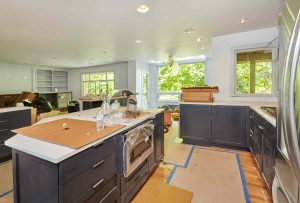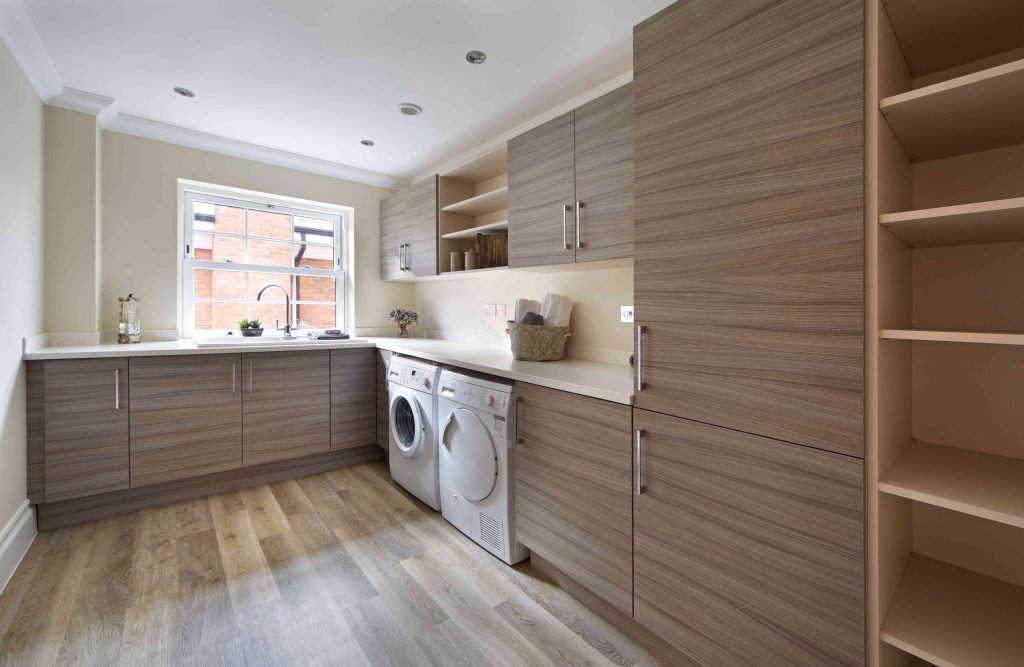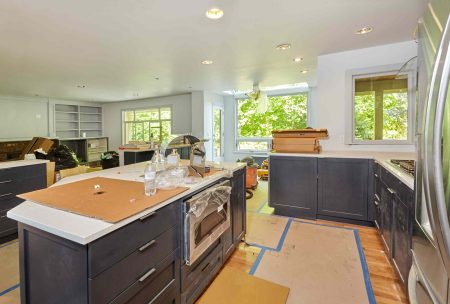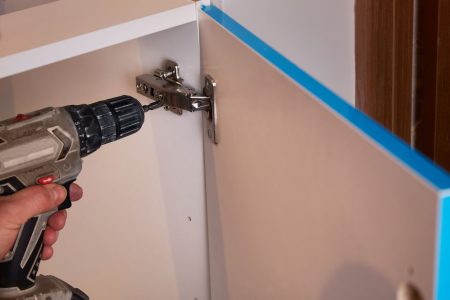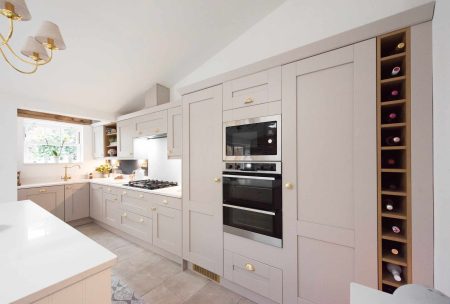An efficient, functioning laundry room hinges on several factors such as your choice of the washer and dryer, wall finishes, floor covering, storage, and organization. But the most important factor when remodeling your laundry room is deciding on the best room layout that works for your situation.
Laundry rooms have large appliances, countertops, cabinets, and sometimes a sink. So they borrow much of their inspiration from kitchen layout planning, employing favorites such as the L-shaped, U-shaped, galley, and open plan floor plans. Not only does the laundry room footprint need to work within its given space, but it also needs to maximize the user’s efforts while reducing the overall workload.
-
01
of 05Galley or Corridor Laundry Room Layout
It is the most simple, basic, and economical style of laundry room layout since it fits into even the smallest of areas. Many laundry rooms have this type of layout simply out of default: The space is so small that only one wall is available for appliances and counters.
Typically called a galley or quarter-style laundry room, this layout fits in long, narrow areas found off the side of kitchens or in mudrooms. Because the space is slim, often as narrow as 5 feet wide, there is room only on one side. That side may have the washer and dryer, utility sink, countertops, and large cabinets.
The other side of the laundry room might be a wall only. At most, the other wall may have hooks or narrow shelving. Keep these to a minimum, though, since they will interfere with the operations of the washer and dryer.
Pros-
Fits most homes
-
Inexpensive
Cons-
Not much storage
-
Difficult to move around
-
-
02
of 05L-Shaped Laundry Room Layout
An L-shaped laundry room layout is similar to a galley-style layout in that a majority of the services are clustered on one long wall: the layout’s long leg. The short leg of the L-shaped layout might have a washer and dryer, a short run of countertops and cabinets, or a laundry room sink.
On this short leg is usually space only for one service, not multiple services. At best, you may be able to fit a utility sink. But in narrow laundry rooms, the short leg is mainly used for storage and for folding small items.
Much of this layout is dependent on the location of the water supply and drainage, as well as the electrical receptacle or gas for the dryer. If these are located on the short leg of the layout, it makes smart design sense to place the washer and dryer here as this gives you a maximum amount of room to open and close the washer and dryer doors.
Pros-
Short leg of L can be sized to fit many spaces
-
Plenty of countertop space
Cons-
Dependent on water supply and drainage
-
Short leg often not large enough for sink
-
-
03
of 05U-Shaped Laundry Room Layout
If you were to take an L-shaped laundry room, then extend it so that you have two long legs, you would have a U-shaped layout.
Much of the heavy lifting of the U-shaped laundry room’s functions is already carried by the other two legs of this layout. This second long leg represents a type of bonus area for additional storage, organizers, shelves, hooks, and clothes racks.
A U-shaped laundry room layout should be at least 90 inches wide, to accommodate countertops on both long walls and a 42-inch wide aisle.
Pros-
Lots of room for storage
-
Central space for folding area
Cons-
Requires a large space
-
More expensive
-
-
04
of 05Open Plan Laundry Room Layout
An open plan laundry room layout is the most design-flexible layout of all.
To begin with, you will need a large space. Appliances and storage are located at any point around the perimeter of the room, dependent on the location of doors, windows, water, drainage, and electrical services.
As with open plan kitchens that have an island in the center, open plan laundry rooms are usually large enough that they can have a folding table located in the center of the room.
Open plan laundry room layouts are usually flexible, too. The space might be large enough to allow for empty areas that can be filled in at a later time.
Some of these open areas might even be recruited for purposes that aren’t related to laundry: Large storage cabinets for sports and camping gear can be located here. The water heater can be tucked away in a corner. Or a small utility shower can be installed here.
Pros-
Flexible
-
Large enough to allow for non-laundry activities
Cons-
Requires a very large space
-
Expensive
Continue to 5 of 5 below. -
-
05
of 05Hidden or Invisible Laundry Room Layouts
When you have no dedicated space available for a laundry room but you still want to do your own laundry, one option is to hide away the laundry room in an existing room of your house.
Because laundry rooms and kitchens share so many of the same characteristics and needs, they are a natural fit. So, laundry rooms are often found hidden away here.
Bathrooms have water supply and drainage, so they are sometimes used, as well. One issue with using a bathroom as a laundry room is that they usually lack the 240V increased-power electrical receptacle needed for dryers.
A side-by-side washer and dryer are placed under the kitchen countertop, sometimes with a sliding door or curtain to mask them when not in use. In other layouts, a stacking washer and dryer are placed in the kitchen pantry and closed off behind a door.
Storage for laundry items is extremely limited and sometimes is shared with kitchen items. If you have any type of extra space for a laundry room, creating a hidden laundry room within your kitchen should not be your first choice.
Pros-
Eliminates need for separate laundry room
-
Laundry elements are hidden
Cons-
Uses up space that could be used for kitchen or bath activities
-
Laundry appliances tend to be smaller sized
-
Read the full article here
